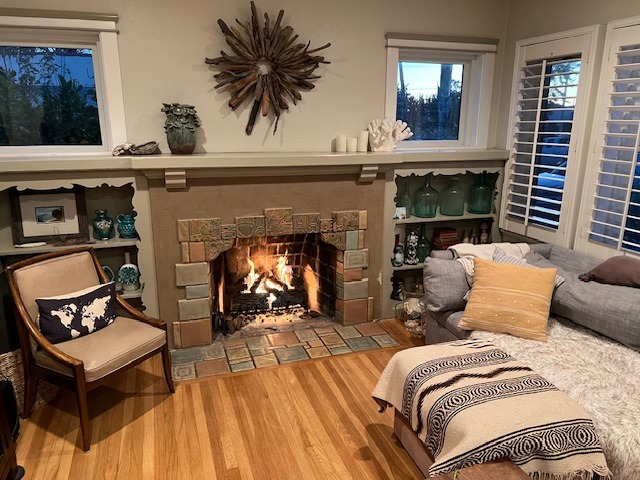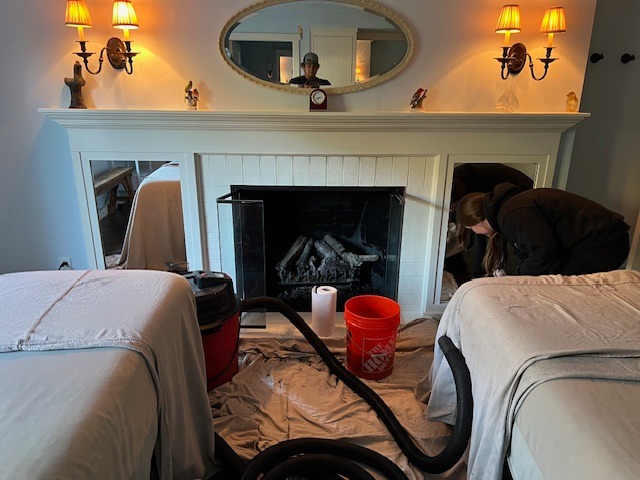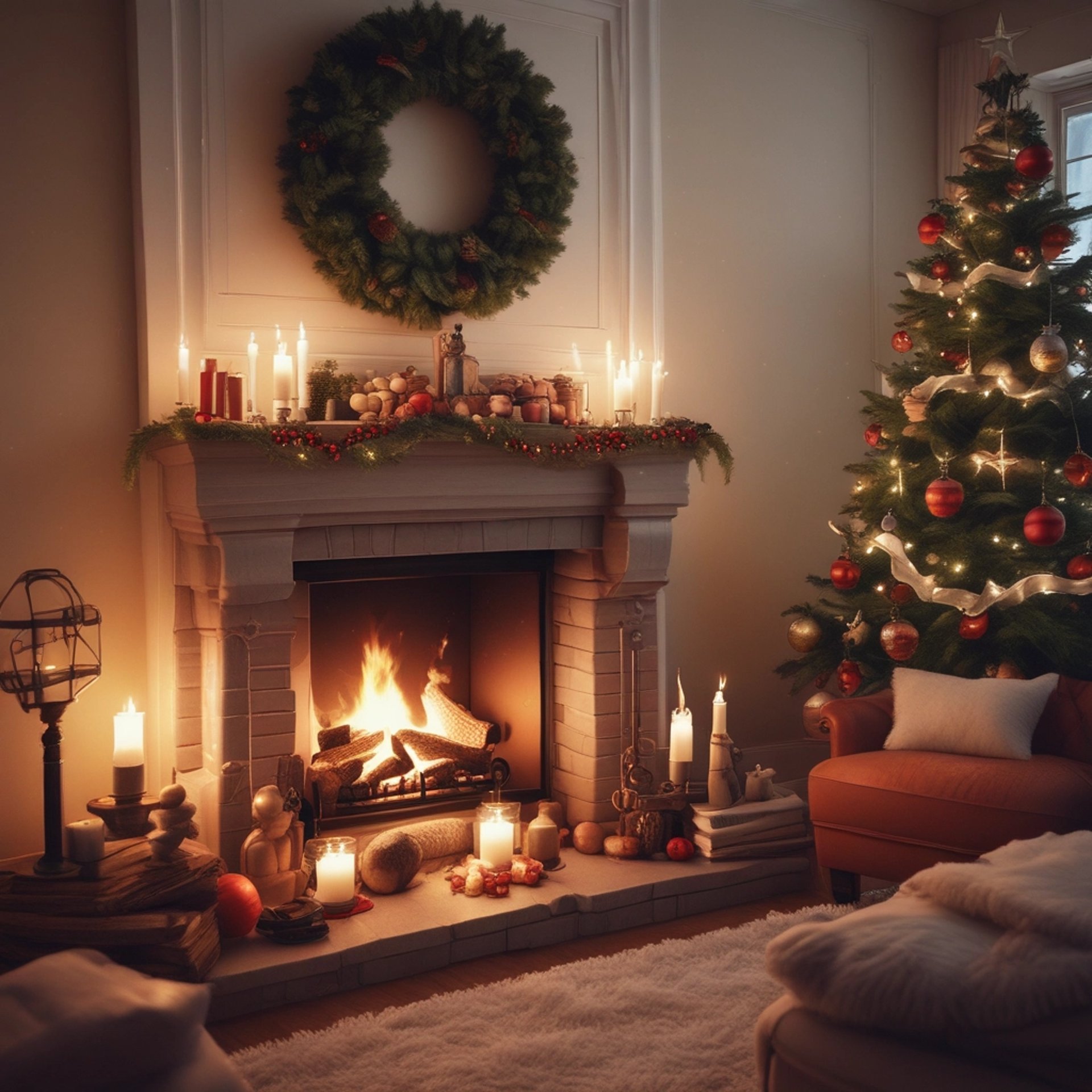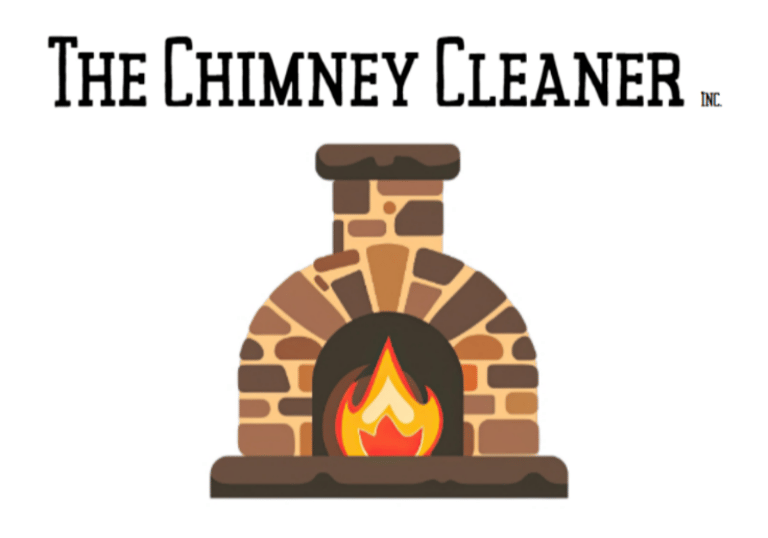
Chimney Inspections
Essential insights on Level 1, Level 2, and Level 3 chimney inspections.
Chimney Inspections
Explore the importance of Level 1, Level 2, and Level 3 chimney inspections.
Level 1 Inspection
Basic visual inspection to assess chimney condition and safety requirements.


Level 2 Inspection
Detailed inspection using video technology to evaluate internal chimney structures.
Required during property transactions or after significant changes to the chimney.
Level 3 Inspection




Chimney Inspection Levels
What are chimney inspection levels?
Chimney inspections are categorized into three levels based on the scope, complexity, and level of access required.
These levels—Level 1, Level 2, and Level 3—are defined by the National Fire Protection Association (NFPA 211) and represent a graduated approach to evaluating the condition and safety of a chimney system.
Level 1 Inspection:
The most basic form of inspection, performed when the system has been used in the same manner and under the same conditions. It involves a visual examination of readily accessible portions of the chimney exterior, interior, and accessible components of the appliance and connector. The goal is to verify structural soundness, proper installation, and freedom from combustible deposits or obstructions.Level 2 Inspection:
Required when any changes have occurred—such as a new appliance installation, a change in fuel type, relining, or a property transfer—or after an operational malfunction or external event (like a chimney fire or earthquake). This level includes everything in Level 1 plus a more detailed evaluation of accessible areas in attics, crawl spaces, and basements. It often includes video scanning or camera inspection to examine internal surfaces of flue liners and joints for damage or buildup.Level 3 Inspection:
The most comprehensive type, performed when serious hazards are suspected that cannot be fully evaluated without accessing concealed areas. This may involve removal of components (such as wall sections, chimney crowns, or interior finishes) to inspect concealed flues or construction elements. A Level 3 inspection is typically recommended only when evidence of structural failure, fire damage, or severe deterioration is present.
When are inspections necessary?
Inspections are necessary during installation, after a fire, or when there are signs of damage or blockage.
What does Level 1 inspection include?
Level 1 Inspection
A Level 1 inspection is the most basic, routine evaluation of a chimney system, suitable when no changes have been made to the appliance, venting system, or fuel type, and there have been no known performance issues. It focuses on verifying that the system remains safe for continued use under its current operating conditions.
During a Level 1 inspection, the technician performs a visual examination of all readily accessible areas of the chimney’s exterior and interior, including the firebox, damper, smoke chamber, and portions of the flue that can be viewed without specialized tools or disassembly. The inspector checks for:
Structural integrity of the chimney and fireplace components, including cracks, spalling, or missing mortar.
Freedom from combustible deposits and blockages, such as creosote, soot buildup, or bird nests.
Proper clearances to combustibles and evidence of heat damage or corrosion.
Operational readiness of components such as the damper, cleanout doors, and chimney cap.
General condition of the chimney crown, flashing, and masonry or metal surfaces visible from the roofline or appliance connection.
The goal of a Level 1 inspection is to confirm that the system is sound, unobstructed, and functioning as intended—safe for continued operation under the same conditions. If deficiencies or potential hazards are discovered, the inspector may recommend a Level 2 inspection for a closer evaluation.
What is Level 2 inspection?
Level 2 Inspection
A Level 2 inspection is a more comprehensive evaluation of the chimney system, required whenever a change has occurred in the system or its use. This includes installing a new appliance, converting fuel types, relining the flue, selling or transferring the property, or after any event that could have affected the chimney’s integrity—such as a chimney fire, seismic activity, or severe weather.
This inspection includes all components examined in a Level 1 inspection plus a more detailed assessment of accessible areas that may not be part of regular service, such as attics, crawl spaces, and basements where portions of the chimney may be exposed.
A key feature of a Level 2 inspection is the use of video scanning or specialized camera equipment to examine the entire interior flue surface. This allows the inspector to document and assess conditions that cannot be seen from the fireplace or appliance connection, including:
Cracks, voids, or offsets in the flue liner.
Evidence of past chimney fires or heat damage.
Improperly sized or disconnected flue joints.
Blockages, nesting materials, or creosote accumulations.
Missing or deteriorated mortar between clay flue tiles.
Inspectors also verify that the chimney meets current clearance and construction requirements, confirm that connections are properly sealed, and ensure the system remains in compliance with NFPA 211, local building codes, and manufacturer listings.
The purpose of a Level 2 inspection is to provide a thorough, documented evaluation of the chimney’s condition and suitability for continued use, especially when ownership or system changes may introduce unknown risks.
What is Level 3 inspection?
Level 3 Inspection
A Level 3 inspection is the most extensive and invasive form of chimney evaluation defined under NFPA 211. It is performed only when a known or suspected hazard exists and cannot be fully assessed through a Level 1 or Level 2 inspection. Typical triggers include evidence of structural failure, hidden fire damage, severe water intrusion, or after incidents such as chimney fires, lightning strikes, or earthquakes.
This level of inspection includes all procedures from Levels 1 and 2, but it goes further by allowing the inspector to access concealed areas of the chimney or adjacent building structure that are otherwise inaccessible. To reach these concealed spaces, the removal or partial dismantling of building materials or chimney components may be necessary—examples include:
Opening sections of walls, ceilings, or masonry to inspect hidden flue areas or chase interiors.
Removing chimney crowns, interior finishes, or cleanout doors to expose internal construction.
Disassembling or breaching flue liners, smoke chambers, or adjoining framing where concealed damage is suspected.
The inspection focuses on identifying serious structural or safety issues such as:
Cracked or displaced masonry or flue liners.
Fire damage to surrounding combustibles.
Voids or breaches that could allow heat, smoke, or gases to escape into the structure.
Evidence of improper construction or unpermitted modifications.
Because a Level 3 inspection involves destructive access, it is typically performed after consultation with the property owner and often in coordination with insurance adjusters, engineers, or restoration contractors.
The goal is to provide a definitive assessment of the chimney’s condition and safety, documenting all hidden defects that could compromise performance or life safety. After completion, the inspector provides a detailed written report with photographs, findings, and recommendations for repair or reconstruction.
How often should I inspect my chimney?
It is recommended to inspect your chimney annually to ensure safety and compliance with NFPA 211 standards.

Contact Us
Get in touch for chimney inspection inquiries.
